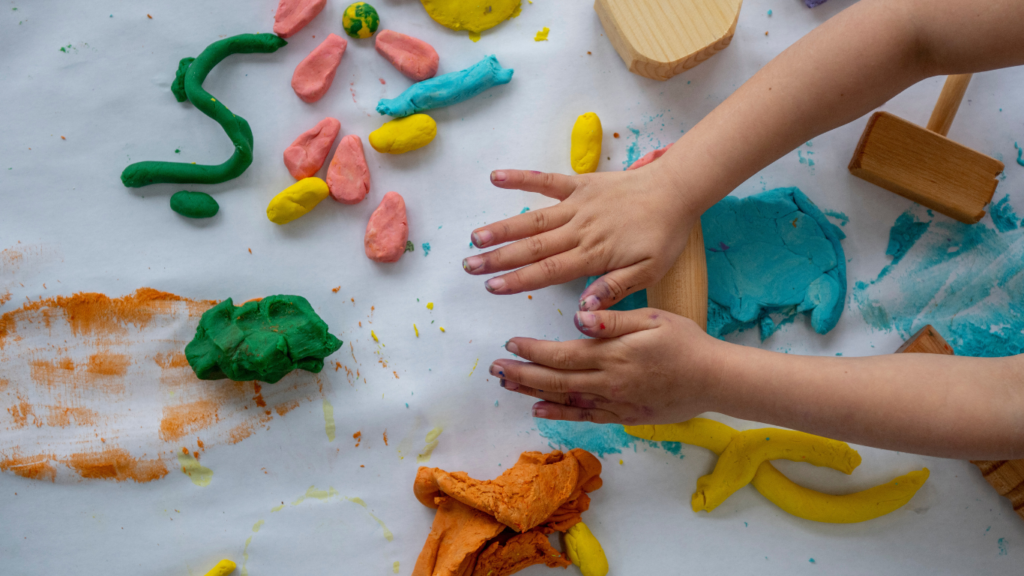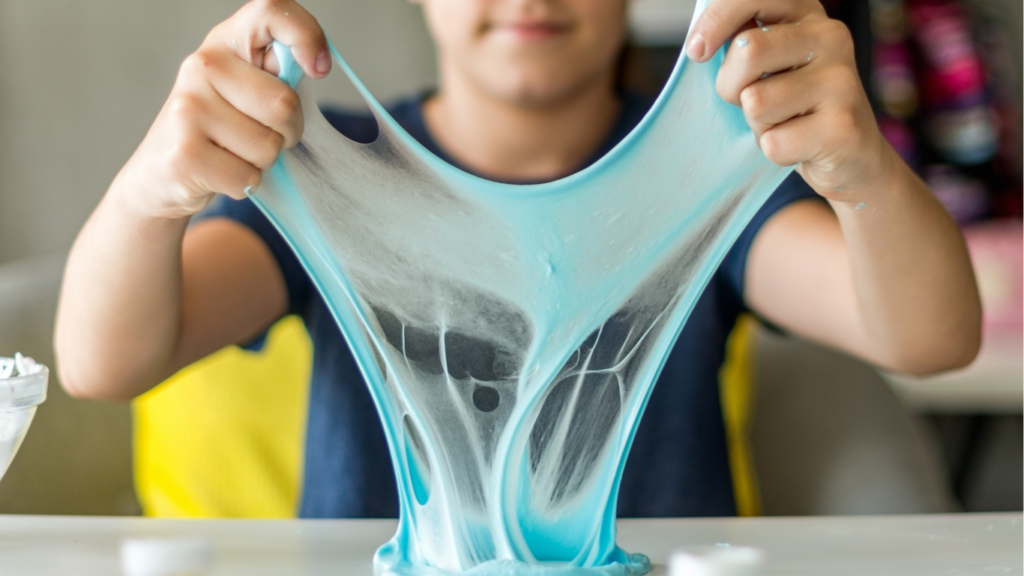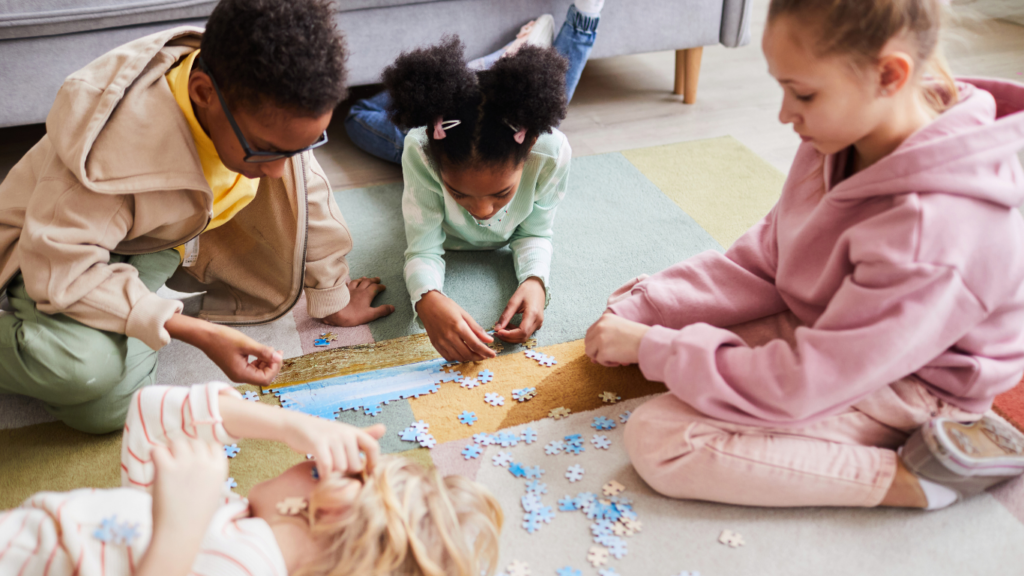When it comes to helping kids learn, sensory play is a game-changer. It’s not just about keeping little hands busy—it’s about engaging their minds in ways that spark creativity, problem-solving, and critical thinking. From squishy textures to vibrant colors, sensory activities tap into a child’s natural curiosity while building essential skills.
Benefits Of Sensory Play For Learning
- Sensory play enhances brain development by forming connections between neurons. Activities like finger painting or water play sharpen tactile and visual processing skills, supporting cognitive growth.
- It improves motor skills through hands-on experiences. Manipulating playdough or threading beads strengthens fine motor coordination, critical for writing and self-care tasks.
- Language development also benefits from sensory play. Describing textures, colors, or actions during activities like sand exploration expands vocabulary and communication skills.
- It aids emotional regulation by providing calming sensory inputs. Engaging in repetitive actions, such as squeezing stress balls, helps children manage stress and anxiety.
- Social skills improve as children collaborate during group sensory activities. Sharing tools or ideas while exploring sensory bins fosters cooperation and teamwork.
- Sensory play builds problem-solving abilities. Activities like digging for hidden objects in rice encourage creative thinking and persistence in finding solutions.
Sensory Play Ideas For Toddlers
Engaging toddlers in sensory play enhances their development while keeping them entertained. These ideas combine learning and fun in simple, effective activities.
Mess-Free Sensory Bags
I use sensory bags to provide tactile exploration without the mess. Fill a sealable plastic bag with hair gel, glitter, or small beads to create a squishy texture that toddlers can press and manipulate. Add alphabet beads or small shapes for letter or shape recognition. Secure the bag with strong tape to prevent leaks and ensure safety.
Water Play Activities
Water play promotes motor skills and problem-solving abilities. I set up shallow tubs with water and include items like measuring cups, sponges, and small floating toys. Adding a few drops of non-toxic food coloring makes it more captivating. During these activities, toddlers can explore concepts like:
- pouring
- floating
- sinking
which strengthen cognitive and tactile development.
Nature-Themed Sensory Bins
Nature-themed sensory bins connect toddlers to the natural world while enhancing fine motor skills. Fill a container with soil, dried leaves, pinecones, or smooth stones. Adding small plastic animals or insect figurines offers opportunities for imaginative play. I guide toddlers in exploring different textures and creating simple stories as part of their sensory experience.
Sensory Play Ideas For Preschoolers
Sensory play provides preschoolers with opportunities to explore, create, and learn through hands-on experiences. These activities balance fun and education while supporting cognitive and physical development.
Playdough Creations
Playdough encourages preschoolers to develop fine motor skills and creativity. Providing tools like rolling pins, cookie cutters, or plastic knives promotes hand-eye coordination as they cut, shape, and mold. Incorporating themes such as creating animals or building simple structures introduces imaginative play. Adding scents or colors to homemade playdough enhances sensory engagement and sparks curiosity.
Sand And Rice Sensory Bins
Sand and rice bins introduce textures and build tactile sensitivity in preschoolers. Adding small items like toy animals, measuring cups, or spoons transforms bins into themed exploration zones. For example, burying objects for a treasure hunt supports problem-solving and cooperative play when done in groups. Dying rice with food coloring creates a vibrant sensory experience while teaching colors.
Music And Sound Exploration
Music and sound activities refine auditory processing and rhythm recognition. Offering simple instruments like tambourines or maracas helps preschoolers experiment with beats and patterns. Creating DIY instruments, such as filling jars with different materials (beans or bells), combines tactile stimulation with sound exploration. Singing along to songs expands vocabulary while fostering social interaction.
Sensory Play For Older Kids

Engaging older kids in sensory play boosts their learning and enhances critical thinking and creativity. These activities incorporate advanced skills and concepts, offering developmentally appropriate challenges.
DIY Slime Projects
I find that DIY slime provides a fun, hands-on way for older kids to explore texture and chemistry. Creating slime introduces concepts like viscosity and material combinations. Kids can experiment with ingredients like glue, borax, and food coloring to make different types of slime, such as fluffy or glitter slime. Adding beads or foam balls can enhance tactile stimulation and creativity.
Cooking And Baking Activities
Cooking and baking activities work well for both sensory engagement and practical learning. Measuring, mixing, and kneading dough refine motor skills and teach fractions and ratios. Recipes with strong aromas, like cinnamon rolls or garlic bread, enhance sensory experiences while encouraging independence. Safeguards ensure safe handling of tools like knives or mixers.
Science Experiments With Texture
Science experiments with texture combine learning and sensory fun. Incorporating materials like cornstarch and water, I often suggest making oobleck to explore non-Newtonian fluids. Similarly, creating homemade kinetic sand with sand, cornstarch, and water introduces texture variation and demonstrates solid-liquid interactions. These experiments promote curiosity and scientific thinking.
Tips For Creating Effective Sensory Play Experiences
Understand Age-Appropriate Activities
Select activities that match the child’s developmental stage. For toddlers, I use simple and safe materials like water or textured fabrics. With older kids, I introduce more complex items such as DIY slime or small-scale science experiments to keep them engaged.
Focus On Targeted Sensory Inputs
Incorporating specific sensory inputs enhances the experience. I might include tactile inputs like playdough for fine motor skills or auditory components like musical instruments for sound exploration and rhythm development.
Optimize the Environment
A well-prepared environment minimizes distractions and enhances engagement. I set up sensory bins or activities in a dedicated, quiet space to keep kids focused. For messy activities, I protect surfaces using tablecloths or mats.
Ensure Safety And Supervision
Using non-toxic materials ensures safety. For instance, I use edible finger paints or taste-safe dough with younger children. Supervision is essential, especially with small objects or materials.
Encourage Exploration And Creativity
Providing open-ended materials supports imaginative play. I offer items like kinetic sand, craft supplies, or natural materials, allowing children to create and explore freely without pre-set rules.
Incorporate Learning Goals
I align sensory play with specific learning objectives, such as letter recognition using foam letters in sensory bins or simple math concepts during cooking activities, ensuring both fun and educational value.
Include Group Activities
Introducing group-based sensory play builds social skills. Activities like shared sensory bins or group rhythm sessions with instruments encourage collaboration and communication.
Reflect And Adjust
After an activity, I observe responses to identify what worked. For example, if a child prefers tactile exploration, I prioritize similar activities in the future to encourage deeper engagement.



 Community Engagement Manager
Community Engagement Manager
